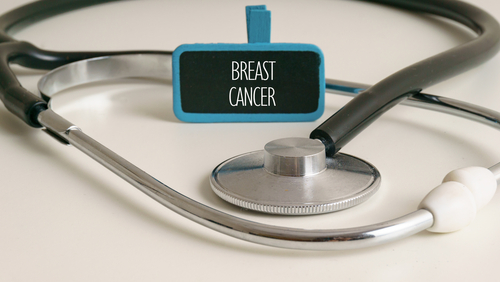A key measure of the breast cancer that’s left after chemotherapy but before surgery could be used to come up with a long-term patient prognosis, according to a study.
Doctors could apply the method to neoadjuvant — or pre-surgery — chemotherapy alone, or to a combination of chemotherapy and HER-2 targeted treatment, researchers said.
The study, “Long-Term Prognostic Risk After Neoadjuvant Chemotherapy Associated With Residual Cancer Burden and Breast Cancer Subtype,” was published in the Journal of Clinical Oncology.
There are two main measures of residual cancer. One is the yp-stage scale developed by the American Joint Commission on Cancer. The other is the residual cancer burden, or RCB, scale.
W. Fraser Symmans and colleagues at the University of Texas wanted to know whether RCB could be an effective means of determining the long-term prognosis of breast cancer patients in two scenarios. One scenario was a patient receiving chemotherapy, then surgery. The other scenario was a patient receiving a combination of neoadjuvant chemotherapy and HER2-targeted treatment, then surgery.
Symmans, MB, ChB, is professor of pathology and director of research operations at the University of Texas MD Anderson Cancer Center.
The researchers evaluated three groups of breast cancer patients treated with Taxol (paclitaxel) followed by chemotherapy with fluorouracil, Adriamycin (doxorubicin), and cyclophosphamide.
One cohort, known as T/FAC-1, consisted of the first 219 patients whose RCB scores were measured. The second, T/FAC-2, was a validation cohort for the initial RCB measurements. It was made up of 226 patients. The third cohort, T/FAC-3, was an independent validation cohort for RCB. It consisted of 342 patients.
Another validation cohort of 132 patients received FAC chemotherapy only. A fifth cohort of 203 patients received concurrent Herceptin (trastuzumab) with sequential Taxol and fluorouracil, Pharmorubicin (epirubicin), and cyclophosphamide. This group was known as the H+T/FEC cohort.
Patients were divided into subsets based on hormone-receptor and HER-2 status at the time of diagnosis. The three categories were hormone receptor-positive/HER-2-negative, HER-2-positive, or triple negative breast cancer.
Researchers calculated each patient’s RCB and yp-stage scores for residual cancer, then followed the patients for survival outcomes. In terms of RBC scores, patients could either exhibit a complete response, in which no cancer cells were found after treatment, or be included in RCB-I, RCB-II, or RCB-III categories, depending on the number of cancer cells found after chemotherapy.
Thirty-five percent of patients had a complete response to their treatment. Twenty percent of them were in the T/FAC-1 group. Thirty-three percent were in T/FAC-2, and 17 percent in T/FAC-3.
The median event-free follow-up was 13 1/2 years in the T/FAC-1 cohort, 9.1 years in the T/FAC-2 group, 6.8 years in the T/FAC-3 cohort, 16.4 years in the FAC cohort, and 7.1 years in the H+T/FEC group.
Researchers concluded that the RCB index was a good predictor of the risk of relapse or mortality in each patient subset, independent of other disease variables.
In the combined T/FAC cohorts, the best 1o-year relapse-free survival rate among triple negative breast cancer patients, 86%, was seen in patients who achieved a complete response to treatment, versus 81% of the RCB-I group, 55% of the RCB-II group, and 23% of the RCB-III group.
The 10-year relapse-free survival rate of patients with hormone receptor-positive/HER-2-negative breast cancer included in the T/FAC cohorts was 83% in patients who achieved a complete response, versus 97% of patients in the RCB-I group, 74% of RCB-II patients, and 52% of RCB-III patients.
Breast cancer patients in the H+T/FEC cohort who achieved a complete response had a 95% 10-year relapse-free survival rate. The figures were 77% for those with RBC-I, 47% for RBC-II, and 21% for RBC-III.
“Overall, findings from our retrospective institutional cohorts support the notion that pathologic response to neoadjuvant chemotherapy is prognostic in all phenotypic subsets of breast cancer,” the researchers wrote.
“Evaluation of RCB index and class could be useful because it appears to provide relevant, long-term prognostic data, which add meaningful information to pretreatment clinical and pathologic information and post-treatment yp-stage,” they concluded.
While the results confirmed RCB’s prognostic value, Sibylle Loibl, MD, PhD, and Carsten Denkert, MD, questioned in an an editorial accompanying the journal article whether it was necessary to use an RCB score to come up with a prognosis for all patients after neoadjuvant chemotherapy.

